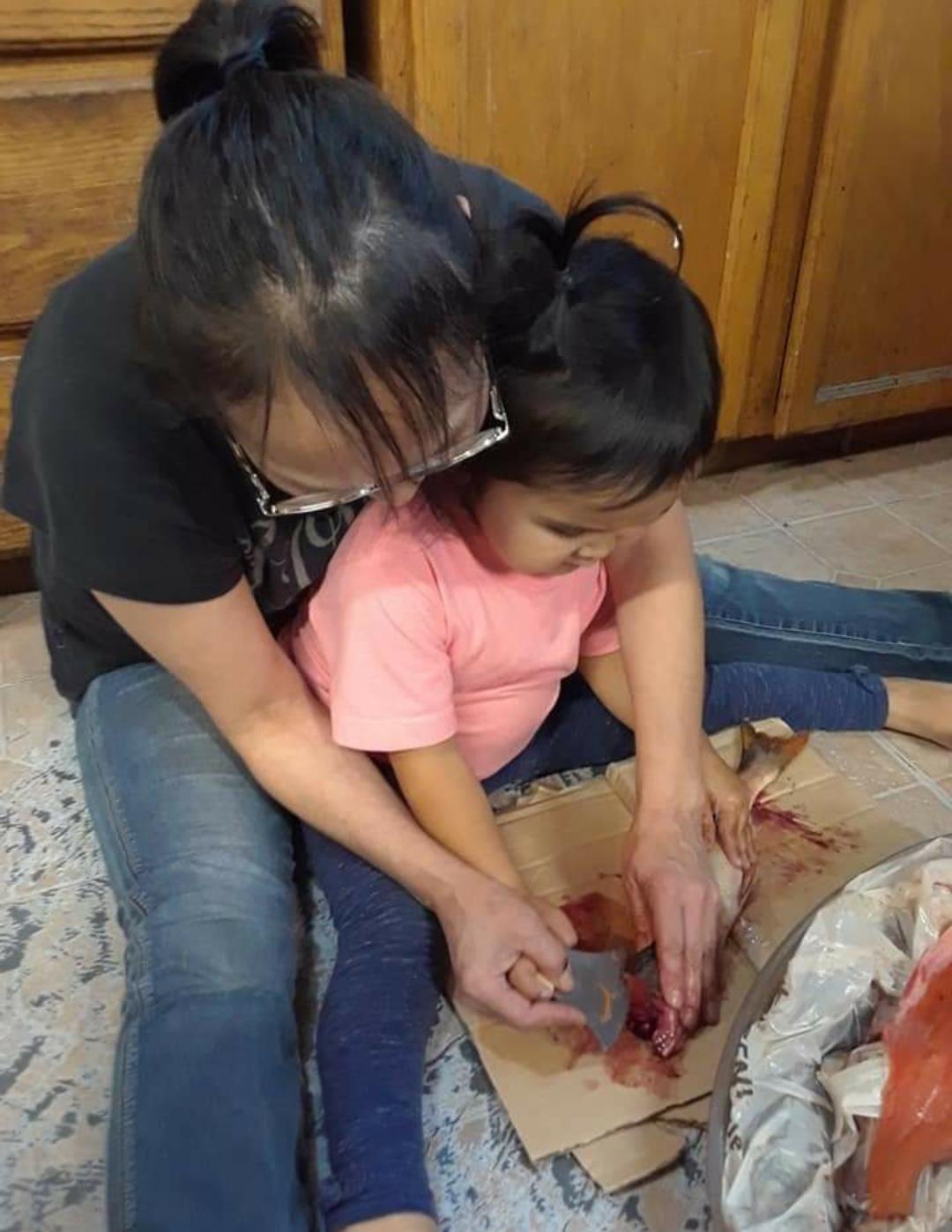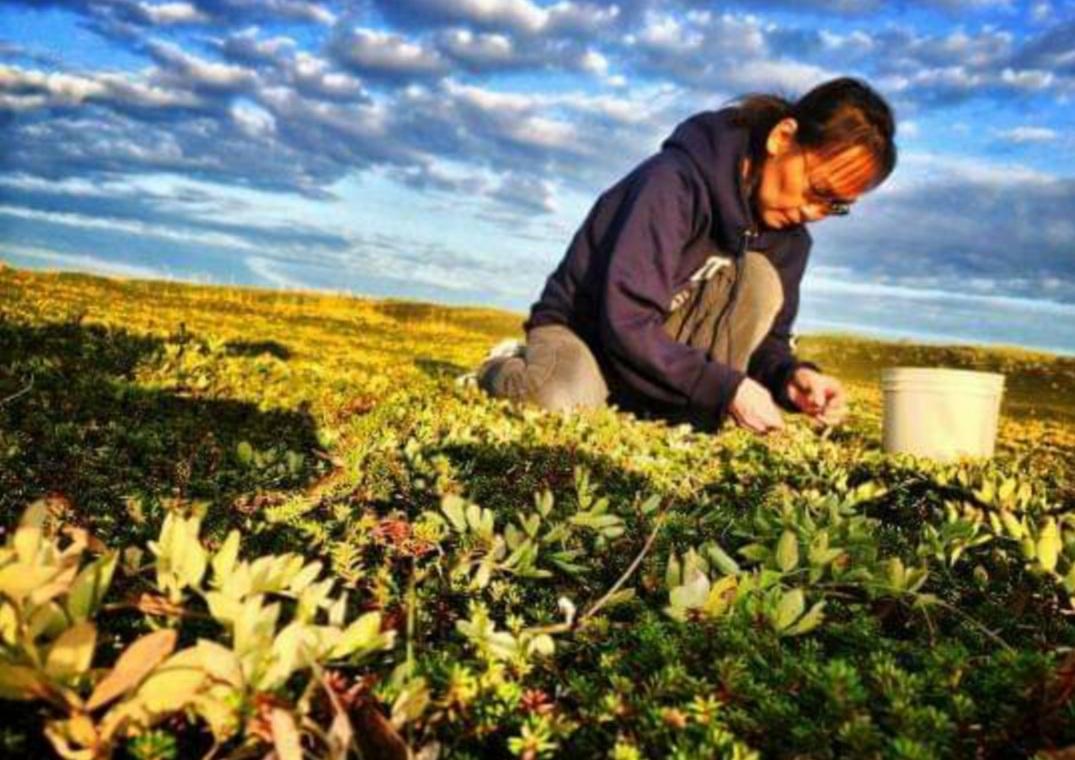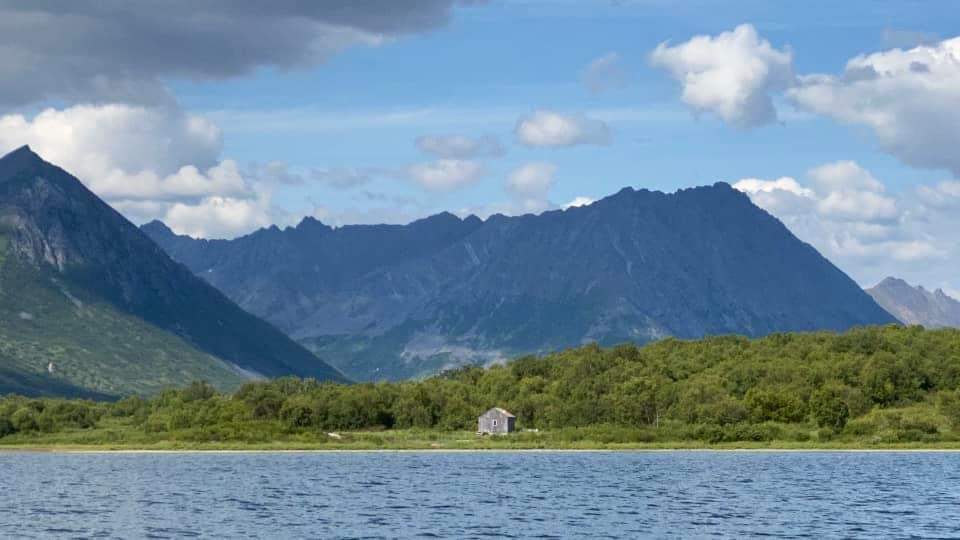
Take care of the land and it will take care of you

Our office assistant Fannie Dock talks about growing up in Bristol Bay, and how she learned that if you take care of the land, it will take care of you.
I was born the 11th of 16 children, all of us raised in Togiak on the southwestern part of Alaska in the Bristol Bay area.
Growing up, we went to camp in the spring and late fall. The spring cabin was 15-20 miles west of Togiak, right across from Hagemeister Island. In late April, my parents would go ahead of us, and my mom would start squirrel trapping while my dad hunted spring geese.
Once school let out in May, we kids would head out to camp in 4 to 5 skiffs, just in time to fish for herring. Once they spawned we would pick herring row on kelp, and gather beach greens and sour dock.
Our all-time favorite thing to do was digging for cockle clams. We would eagerly wait for a minus tide to do it.

Since we could not go back and forth to the village, we’d call my oldest brother on the VHF radio with a list of things we needed, and he would fly the goods to camp by landing on the beach below our cabin during low tide, then fly back with whatever clams we had gathered to put in the freezer.
We stayed at spring camp until about mid-June when the salmon started coming in and we would head home to Togiak for commercial salmon season. We would always return to our spring camp again in August to pick blackberries and nagoonberries, and to catch fall geese.
Fall salmon and moose hunting
Togiak is where we put up salmon for the winter because my dad and most of my older siblings were commercial fisherman. The late fall cabin was and still is at the beautiful Togiak Lake where we hunted for fall moose on the Togiak River, or for bear (if needed), and to split and dry spawned-out red salmon and trout.
We spent winters in the village, but we travelled with snowmobiles and had no restrictions on where we could go. My brothers were mostly the ones out hunting and packing wood.
Take care of the land by keeping it clean, never taking too much

I moved to Anchorage in 2016 to be near my three children and my granddaughter. My youngest son is a 2020 high school graduate of Mt Edgecombe.
I miss the subsistence activities and, since travel is so expensive, I don’t go home as often as I would like, but I try to travel to Togiak every year and to alternate my visits in different seasons so I can split smelts, split salmon, go clamming or pick herring roe on kelp, pick berries, gather greens or help with game—moose, seal or caribou.
My Yupiaq way of life living off the land is a very important part of who I am and where I come from; to keep it clean is our priority. We’ve always been told, “take care of our land and it will take care of you,” and to not take more then we need. Now I am very fortunate to be working for Trustees for Alaska, which understands our way of life and is geared to protect the very lands that sustain us, the Native people of Alaska.


